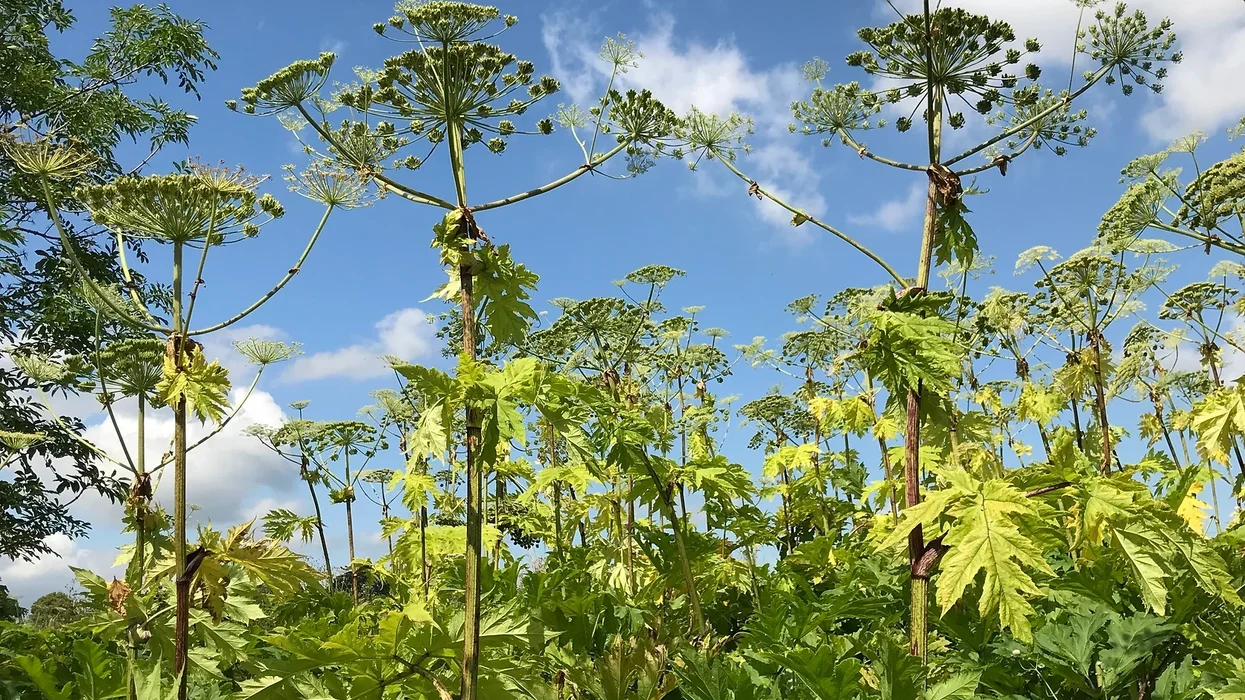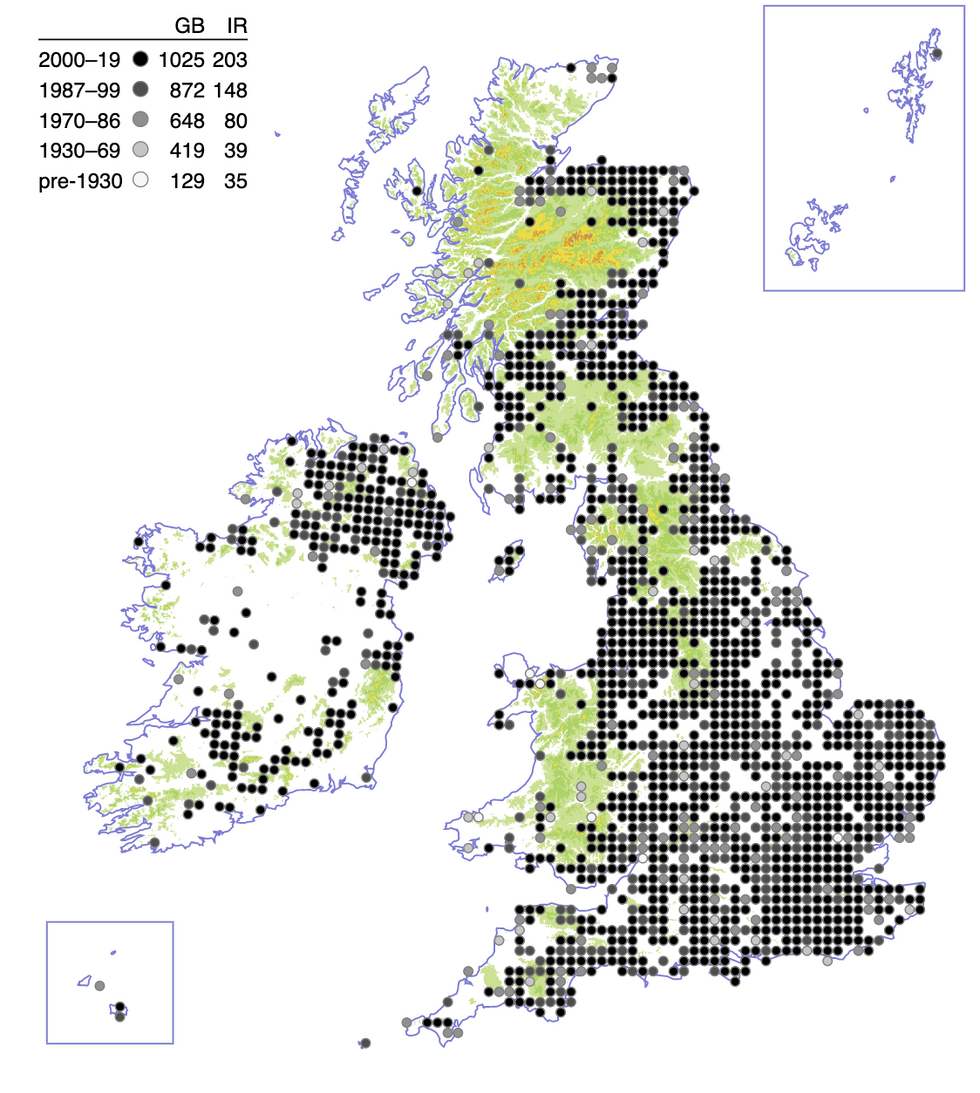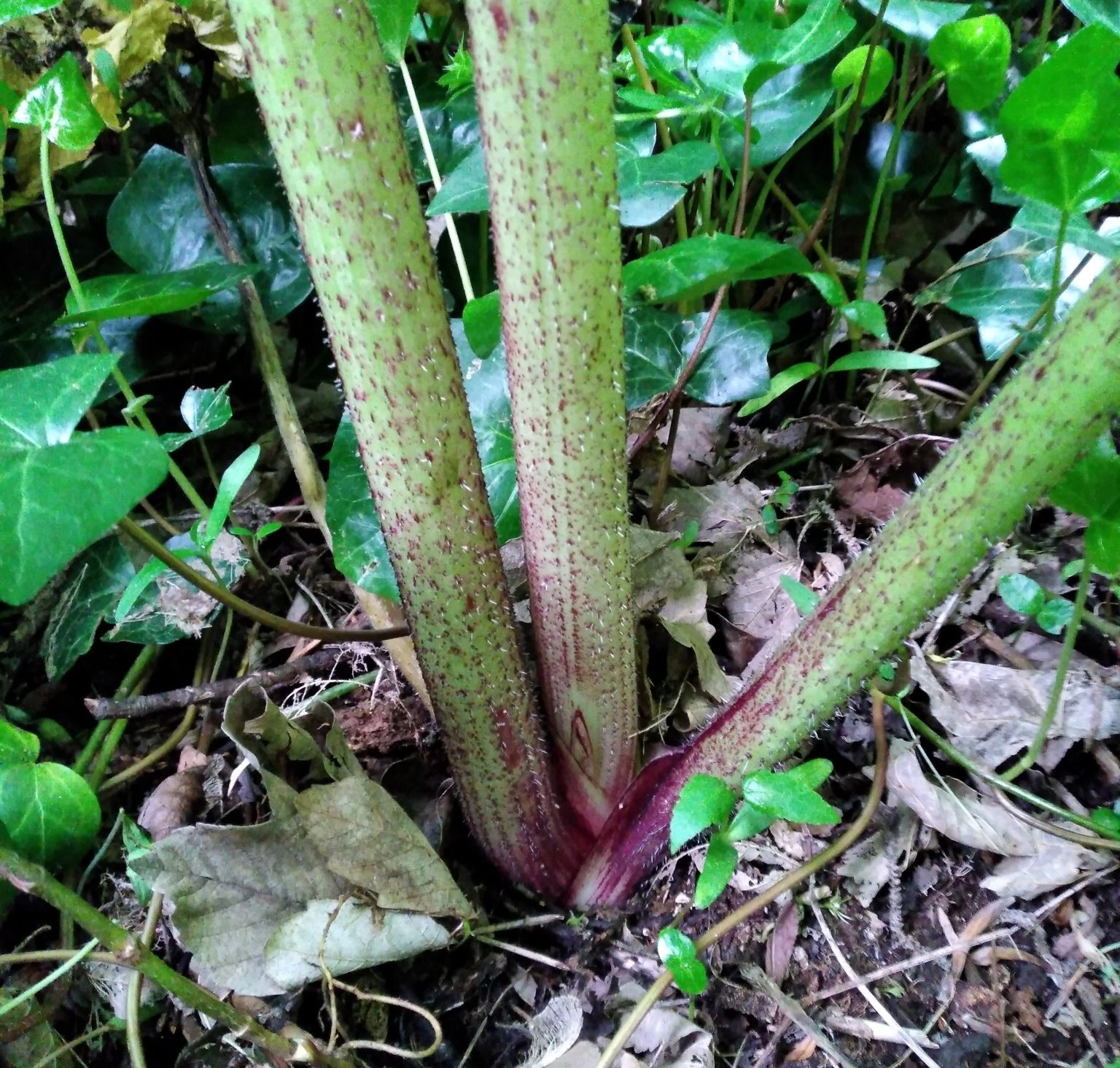Giant hogweed: Terrifying map shows spread of poisonous plant across UK

The plant - more commonly known as Giant Hogweed - contains a highly dangerous sap
|Tees Rivers Trust

The plant has been branded the most dangerous plant in Britain
Don't Miss
Most Read
A horrifying map has revealed the hotspots across the UK for toxic Heracleum mantegazzainum which can cause extreme burns.
The plant - more commonly known as Giant Hogweed - contains a highly dangerous sap which can cause major burns on a victim's skin when exposed to sunlight.
Giant Hogweed, which was imported to Britain in 1817 from the Caucasus region of Russia, can grow between 10-16-feet in height and was popular with ornamental gardeners, looking for an impressive centrepiece for their displays.
The first wild colony of giant hogweed in the UK was reported in Cambridgeshire in 1828.

A horrifying map has revealed the hotspots across the UK for toxic Heracleum mantegazzainum
|Plant Atlas 2020
The plant is part of the same family as parsley, carrots, parsnips, cumin and coriander and can release 10,000 seeds which can spread on the wind or by rivers.
Giant Hogweed will begin to flower across Britain in the coming weeks as experts warn about the risks of coming into contact with the deadly sap.
Children are particularly at risk and even brushing against the stems can lead to excruciating pain if the victim's skin.
According to the Royal Horticultural Society: "The giant hogweeds were introduced into Britain and Europe from the Caucasus Mountains in the nineteenth century.
"The earliest documented reference to their introduction into Britain that has been traced is from the Royal Botanic Gardens Kew Seed List of 1817 where giant hogweed, under the name of Heracleum giganteum was listed among seeds supplied to Kew by the Russian Gorenki Botanic Gardens.
"They were soon introduced into the horticultural trade and being aesthetically impressive plants, were widely planted in ornamental gardens throughout Britain.
"Unfortunately they quickly escaped from cultivation with the first naturalised (‘wild’) population recorded in Cambridgeshire in 1828, and are now widely naturalised as invasive species throughout much of Britain and Europe."
Britons are also warned that the plant thrives in hot weather, where people wearing summer clothes are at special risk of exposure.
One victim, Nathan Davies from Ammanford, Wales almost had his leg amputated after his wound became infected having been badly burned when exposed to the plant's poisonous sap in December 2015.

Children are particularly at risk and even brushing against the stems can lead to excruciating pain if the victim's skin
|Wiki Common images
Deliberately sewing giant hogweed seeds in the wild was banned in 1981 under the Wildlife and Countryside Act.
According to the Royal Horticultural Society (RHS), gardeners must be incredibly careful if they have giant hogweed around their homes.
"When controlling giant hogweed always wear gloves, cover your arms and legs, and ideally wear a face mask when working on or near it. Cut plant debris, contaminated clothing and tools are potentially hazardous too," the society said.
"Wash any skin that comes in contact with the plant immediately. Ensure that contractors working on your land are aware of the risks and are competent to deal with this weed."










